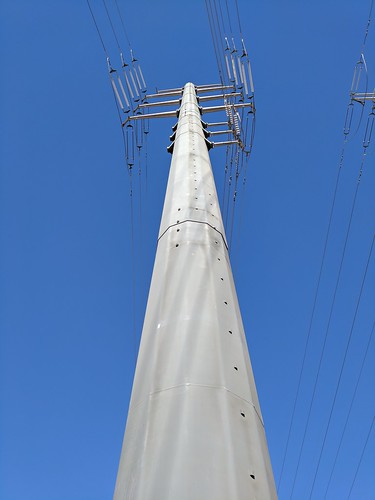As revealed in fig. 1B, CAPE possesses a important radical MK-8245 scavenging potential already at a concentration of five mM. The compounds radical scavenging potential of CAPE was equivalent to that of the synthetic vitamin E derivative which was employed as a optimistic control. Next we analysed if CAPE was also able of lowering ROS in a cellular method (Hct116 colon carcinoma cells) useing the ROS-sensitive probe DCF. Soon after oxidation, this probe displays a brilliant fluorescence which was employed as marker of intracellular ROS focus. Incubation of Hct116 cells with CAPE (twenty five mM, four h) did not have any influence on DCF fluorescence, whereas incubation with H2O2 (five hundred mM, one h) resulted in a sturdy boost in DCF fluorescence (fig. 1C). A preincubation with CAPE (twenty five mM, four h) strongly prevented the H2O2-mediated increase in DCF fluorescence virtually to basal ranges. Next we investigated if this compound is also ready to minimize intracellular ROS concentrations in the in vivo model technique C. elegans. The nematodes have been pretreated with CAPE (a hundred mM) for two days, then the worms ended up put independently into the wells of a 384-multiwell plate just before adding the ROS-sensitive probe H2DCF-DA and putting the worms in a fluorescence reader at 37uC. This treatment outcomes in a strong fluorescence improve in the DMSO management group. CAPE diminished this ROS-mediated fluorescence enhance dose-dependently (supplementary file).
Given that the SKN-1 signalling pathway was not modulated by CAPE in C. elegans, we analysed if this compound may possibly modulate DAF-16, another pivotal redox-sensitive transcription aspect in C. elegans. This transcription aspect which is a part of the insulin-like signalling pathway is also related with the management of oxidative tension, longevity and ageing. To analyse the impact of CAPE on the DAF-sixteen-localisation, we utilised a transgenic pressure (TJ356) which expresses a DAF-16::GFP build. Activation of this transcription factor also requires a translocation in the nucleus which can be analysed equivalent to the SKN-one-activation by fluorescence microscopy. CAPE (one hundred mM, 1 h) significantly increased the fraction of worms exhibiting nuclear accumulation of DAF-16 from 22% (DMSO-dealt with handle) to 70% (fig. four). Because in the circumstance of SKN-one/Nrf2 a discrepancy in the molecular mechanisms of mammalian cells and the nematode was detected, we executed an additional experiment analysing the effect of CAPE in15256539 Hct116 cells. The exercise of mammalian FoxO proteins (orthologues of DAF-16) is controlled by inhibitory phosphorylation which qualified prospects to a nuclear export. We examined the impact of CAPE on the activation of the isoform FoxO4 (western blot). First, we analysed the influence of CAPE (up to 40 mM) on the amount of Ser194-phosphorylated FoxO4. As revealed in fig. 5A, incubation with CAPE has no influence on phosphorylation at this place, only a slight tendency could be seen at the optimum focus used. We more analysed the consequences on the localisation of the transcription factor making use of western blot of the nuclear and cytosolic protein fractions (fig. 5B). While no FoxO4 was detectable in the cytosol the nuclear portion confirmed a continuous FoxO4 concentration. Under these experimental problems no translocation and consequently no activation was detectable.
CAPE does not induce translocation of SKN-1::GFP into nuclei of intestinal cells in C. elegans. three-day-outdated synchronised LD001 C.  elegans have been taken care of with motor vehicle management or 100 mM CAPE (or baicalein as optimistic handle) for one h at 20uC and were then analysed by fluorescence microscopy about visibility of GFP-fluorescence in nuclei of the intestinal cells as observed.
elegans have been taken care of with motor vehicle management or 100 mM CAPE (or baicalein as optimistic handle) for one h at 20uC and were then analysed by fluorescence microscopy about visibility of GFP-fluorescence in nuclei of the intestinal cells as observed.
